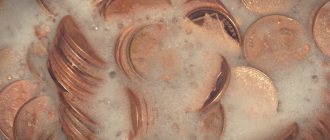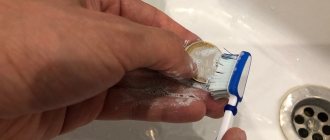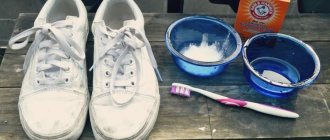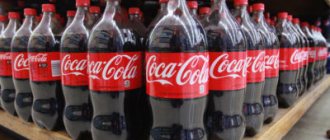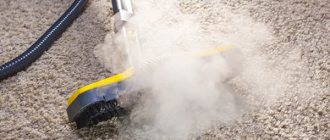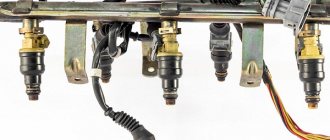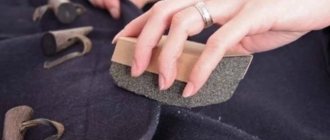People began collecting coins several centuries ago. Ancient coins captivate with their magical beauty. But over time they change their appearance. They may darken or become coated. Holders of valuables want to see their coins shiny, with clearly defined minted lines on their surface. Collectors are faced with the question of how to clean coins without damaging them?
Before cleaning expensive old coins, you need to determine the alloy from which the valuables are made. This will be the main criterion when determining the means for wiping off dirt.
Cleaning silver coins with citric acid
Since silver dissolves very slowly in citric acid, and oxides and other deposits on the coin’s field dissolve much faster, immersion in acid will practically not affect the body of the coin, and the oxides will be dissolved.
The cleaning technology is that the coin is simply immersed in lemon juice and left for a few minutes. After 10 minutes, you need to take out the coin and use a toothbrush to remove the softened dirt and oxides.
The solution is prepared from dry citric acid (the most common kind from the grocery store). The concentration is approximately two teaspoons of acid per glass of warm water (To clean one coin, it is reasonable to prepare only 10 - 20 grams of solution).
| These 25 pennies from 1917 were cleaned in 10 minutes in a citric acid solution. The photograph clearly shows that citric acid does not damage the metal of the coin, but the acid dissolves the patina and all silver coins will shine like new after the lemon treatment. To give the coin a patina of time after cleaning, it will have to be artificially patinated. |
The photo shows two coins. Initially, both were grimy and it was not pleasant to put them in an album without cleaning. As a result of cleaning with citric acid, the 25 pennies received no visible damage and began to look much better. In this case, the 25 pennies were originally in good condition and cleaning took only ten minutes. For coins coated with green oxides, cleaning may take several hours.
How to return noble patina to copper
Many methods of cleaning coins, along with oxides and dirt, also remove the natural patina, which is so highly valued by numismatists. In order to artificially recreate it, you will need sulfur ointment. It can be purchased at a pharmacy.
The left side has patina, the right side is cleared of it.
Sequencing:
- pour warm water into a small basin or bowl;
- put on rubber gloves;
- apply and rub sulfur ointment into the coin, this should be done with your hands under water;
- try to distribute the ointment evenly over the product;
- as soon as the metal begins to darken, the product must be removed and wiped with a paper towel;
- leave the coin for two days to consolidate the effect;
- After that, lubricate with Vaseline and polish with a felt cloth.
The desired effect is achieved in several doses, with an interval of two months. It should be remembered that artificial patina is easily washed off with a product containing acid.
Cleaning silver coins with ammonia
Cleaning silver coins with ammonia is much faster than cleaning coins in citric acid. For cleaning, use a solution of ammonia (10% ammonia) from any pharmacy. It is convenient to pour it into a small container (5-10 ml), the main thing is that the coin is completely immersed in the solution. The coin should be turned over in the solution so that both sides are evenly cleaned.
| These 50 pennies from 1916 were cleaned in 1-2 minutes in a solution of ammonia. The only drawback of such cleaning may be the specific smell of ammonia. |
| These 20 kopecks from 1870 can be attributed to severe cases when the result of the cleaning cannot be predicted. Under the crust of oxides, which were removed with the help of ammonia, the coin was found to be in completely collectible condition. It took quite a long time to clean this coin - about 12 hours. |
In the photograph there is no noticeable difference between a coin with purified citric acid and ammonia. Hence the conclusion: everyone is free to choose how to clean silver coins, the result will not change.
What not to do
Before we talk about how to clean copper-nickel coins, it is worth talking about how not to do this, that is, about methods that are useless or unsafe. First of all, you don’t even have to try using such a popular method of cleaning other coin metals as soapy water. In this case we are talking about oxides, which no soap can remove. Vinegar should be mentioned next, since they really manage to dissolve the oxides of this alloy.
But the downside of such a procedure can be very sad; the image of the coin may lose its clarity. And the alloy itself, under the influence of vinegar, tends to acquire a strange, uncharacteristic pinkish color, which in no way increases the value of the coin, and moreover, can render it unsuitable from a collectible point of view.
Cleaning silver coins with Trilon B
Trilon B is a strong product specially designed for cleaning metal surfaces. An aqueous solution of Trilon B dissolves almost all metal salts, but since Trilon is neither an acid nor an alkali, it does not damage the metal at all. The peculiarity of cleaning silver coins in trilon is that the coins come out with a patina (they do not shine like after citric acid and ammonia). This effect can sometimes be useful.
| These 15 kopecks from 1923 were also a rather complicated case. At first glance, it is impossible to say whether a normal coin or a “kakalik” will come out of the oxides. Cleaning with Trilon is a little faster than cleaning with citric acid, but slower than with ammonia. In total, cleaning this coin required keeping it in the solution for about a day. |
How to clean coins at home?
Not all coins are suitable for cleaning . It is strictly forbidden to clean collectible coins that have a special coating. Their value lies in the top layer. Under the influence of a chemical reagent or other factor, they can turn into a useless thing. Because of this, coins are not subject to sanitary treatment, except for wiping with distilled water.
The rest can be cleaned. But they should not experience mechanical stress. Do not clean with powder or scrape with sharp objects! You can damage the coinage and the item will depreciate in value.
You can clean coins using gentle chemical methods. But here too there are some features, ignoring which can lead to damage to the surface of the product. The main thing in the cleaning process is not to overdo it; you can remove the noble patina . It is she who emphasizes the age of value.
Cleaning Silver Coins with Hydrochloric Acid (HCL)
Hydrochloric acid does a fairly good job of cleaning oxides from the surface of silver coins, but it also has a side effect - the surface of the coin becomes covered with a very dense black coating (patina). Therefore, this method can be used not only for cleaning, but also for patination of coins. Since it is not easy to buy hydrochloric acid in its pure form in stores, to clean coins you can use a detergent based on hydrochloric acid - “Toilet duckling” diluted in water 1:10. The resulting dark layer on the coin is quite durable and can only be erased with abrasive means (eraser, GOI paste, etc.) simply rubbing it on felt does not lead to any result.
| These 15 kopecks from 1881 were cleaned using hydrochloric acid. Before cleaning, it was completely impossible to predict the result and at first glance it seemed that after removing the oxides there would be nothing left of the coin. After cleaning, the coin was uniformly black and, to give it relief, it was rubbed with an eraser to partially erase the patina on the protruding parts of the design. |
How to clean copper-nickel coins?
Let's consider the main available methods for cleaning copper-nickel coins of the USSR and their features. It is highly recommended that you start testing them on the least valuable specimens, which you won’t be too sorry for if they fail.
Electrolysis
The essence of the technique is to place the metal in a weak (isotonic) salt solution, into which a small electric current is applied. However, this is still far from a harmless and unsafe method for humans, since you have to deal with liquid and electricity at the same time. Hand and eye protection must be provided. For cleaning, a 12-volt power supply is used, which requires preliminary preparation. You need to cut off the plugs and divide the wires into 2 parts, stripping their ends of the insulating material. After this, you need to twist the copper wires and solder them to the metal clamps, which should not touch!
Now you need to make an electrolyte. The solution is made at the rate of 1 tbsp. l. table salt per 0.5 liters of water. It needs to be poured into a plastic container. After turning on the power supply, both clamps are immersed in water with all necessary precautions. The one that begins to hiss in the electrolyte is positive (the “+” sign), you need to attach a coin to it.
The negative end of the power supply must be connected to another metal object, such as a regular spoon. In this position, the entire switched-on structure can be left for a long time, up to 4 hours. The approximate time is calculated depending on the condition of the coin and how dirty it is. After this, the current is turned off, the coin disc is removed from the liquid and washed in a warm soapy solution, and then wiped dry with a soft, clean cloth.
"Tilon-B"
This is an effective product that can dissolve patina, but it is very important to do it right. For 1 part of Trilon-B you need to take 10 parts of water. You don’t need to make a lot of solution, just enough volume to immerse a coin in it. After immersion, you need to stand nearby and monitor the cleansing process. The duration of the procedure depends on its condition. After this, the coin should be washed with soapy water, easily and without pressure, cleaning it with a soft brush. Rinse and wipe dry.
Cigarette ash
The method is more likely to be a folk, non-standard one, but sometimes it turns out to be very effective. You will need ashes from smoked cigarettes and plain water. The contaminated coin is first moistened with water, after which ash is applied to it. She remains there for about 20 minutes. After this, you need to gently and carefully rub the ashes into the metal, and then rinse with warm water and wipe dry.
Ayran
The well-known fermented milk drink can also help in cleaning coins made of copper-nickel alloy. But this process will not be quick and gradual. The coin is placed in the ayran for 3-5 days, after which it is removed, rubbed with fingers and placed in a new composition. Each time the result obtained is evaluated to understand how many cycles need to be applied to achieve the desired effect. This is one of the methods, the advantage of which is that there is no reddening of the copper surface.
Cleaning with soda
Let us immediately make a reservation that for coins that, due to storage conditions (for example, buried in the ground) have a frankly bad appearance, this method is unlikely to be effective. You will need: baking soda (carbonate), foil, enamel bowl and boiling water.
Soda is poured onto the foil in an even layer of approximately 2-3 mm, and a coin (or several) is placed on it. The same layer of soda is poured on top. Now you need to fill everything with a small amount of boiling (not boiling water a minute ago, but boiling) water. The container is closed with a lid and left for 0.5 days. Depending on the neglect of the coin and the result obtained, you can repeat the cleaning several times. After that, everything is as usual - we take it out, wash it with soap (it’s a good idea to use toothpaste instead of soap), dry it or wipe it dry.
You should be prepared for the fact that in places where the surface is damaged it will not be shiny silver, but darker and more matte.

